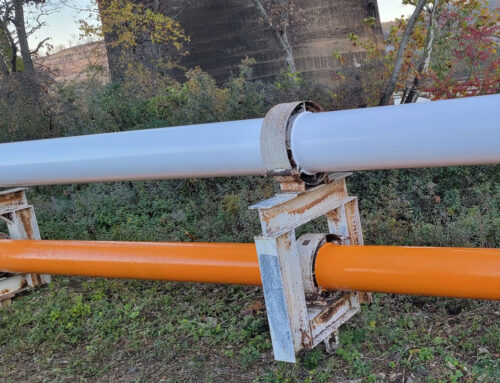Picture the machinery and pipelines your industrial business uses. It represents thousands, if not millions, of dollars. You’re in a constant battle against corrosion in an ongoing attempt to protect your investment. As part of that battle, it’s important to understand the role of rust-inhibitive primers and how they can increase the longevity of your equipment.
An industrial painting expert applies a rust-inhibitive primer as a base coating to a rust-impacted metal surface. “When applied to the substrate, the primer alters the metal’s surface properties, making it inert (resistant to corrosive electrochemical reactions),” Corrosionpedia states.
This mission-critical process is called passivation. When inhibitive primers passivate metallic surfaces, they change their surface properties and increase the metal’s rust protection barriers.
What the Advantages of Rust-Inhibitive Primers Are
Industrial equipment experiences significant environmental exposure: corrosive gases, weather, and soil. Before an industrial painting team can apply a new coating, they need to prepare the surface and then apply a rust-inhibitive primer, also known as a corrosion inhibitor.
Rust-inhibitive primers are not only beneficial. They are mandatory. They primarily contain two materials: zinc chromate and red lead. Here’s a breakdown of those ingredients and how they work.
What Zinc Chromate Is and How It Works
The Ford Motor Company developed zinc chromate, sometimes referred to as hexavalent chromium, as a primer for metals and alloying containing zinc, aluminum, and iron. When it’s sprayed onto a metal surface, it forms a highly protective barrier that reduces the encroachment of corrosion.
What Red Lead Is and How It Works
Also known as red oxide, red lead bonds to surfaces with existing rust and serves as a primer before a coating is applied. Because of its chemical properties, red lead is only meant to be used on metals containing iron or iron oxide. It works as an excellent primer for interior and exterior equipment, pipelines, and machinery.
What the Safety Problems with Corrosion Inhibitors Are and Why There’s a Push to Fix It
The Handbook of Smart Coatings for Materials Protection points to the quest to find “environmentally friendly, yet effective corrosion inhibitors” as part of an industrywide effort to limit and ultimately replace both red lead and zinc chromate, which the Occupational Safety and Health Administration says are known to cause cancer.
Corrosion Inhibitors, Principles and Recent Applications argues that organic corrosion inhibitors are one of five methods to mitigate corrosion, the remaining four being coatings, material selection, cathodic protection, and design; moreover, to be effective, organic corrosion inhibitors must contain sulfur, nitrogen, oxygen, and phosphorus. In recent years, the use of organic corrosion inhibitors has proven to be cost-effective, water-soluble, and temperature-resistant.
Newer types of rust-inhibitive primers strive to remove chromates in favor of zinc and calcium phosphates.
How the Eagle Eye Services Treats Corrosion Problems in Your Industry
Rust is unavoidable. It not only corrodes pipelines, equipment, and machinery; it corrodes your bottom line. Prevent it from burdening your business. Schedule a consultation with the industrial coating experts at Eagle Eye Services. Our team can diagnose your site’s corrosion problems and develop a plan to remove rust and apply new coatings.
Ready to Get Started?
Have questions about your project or need a quote? We’ve got someone ready to help you.



